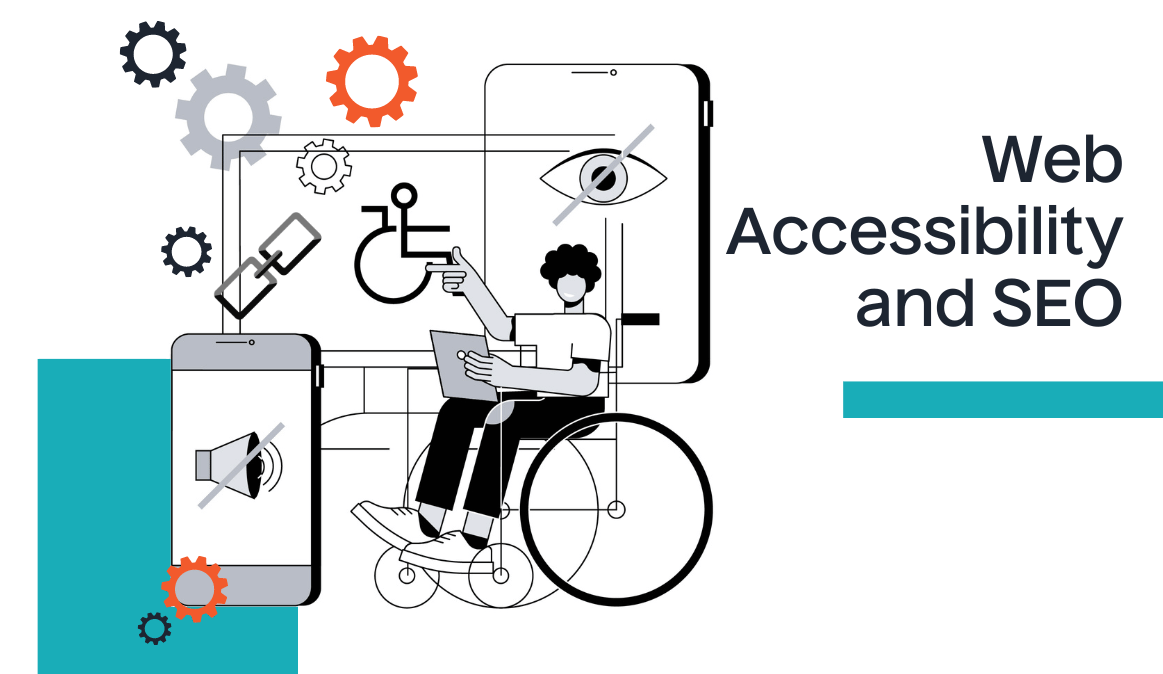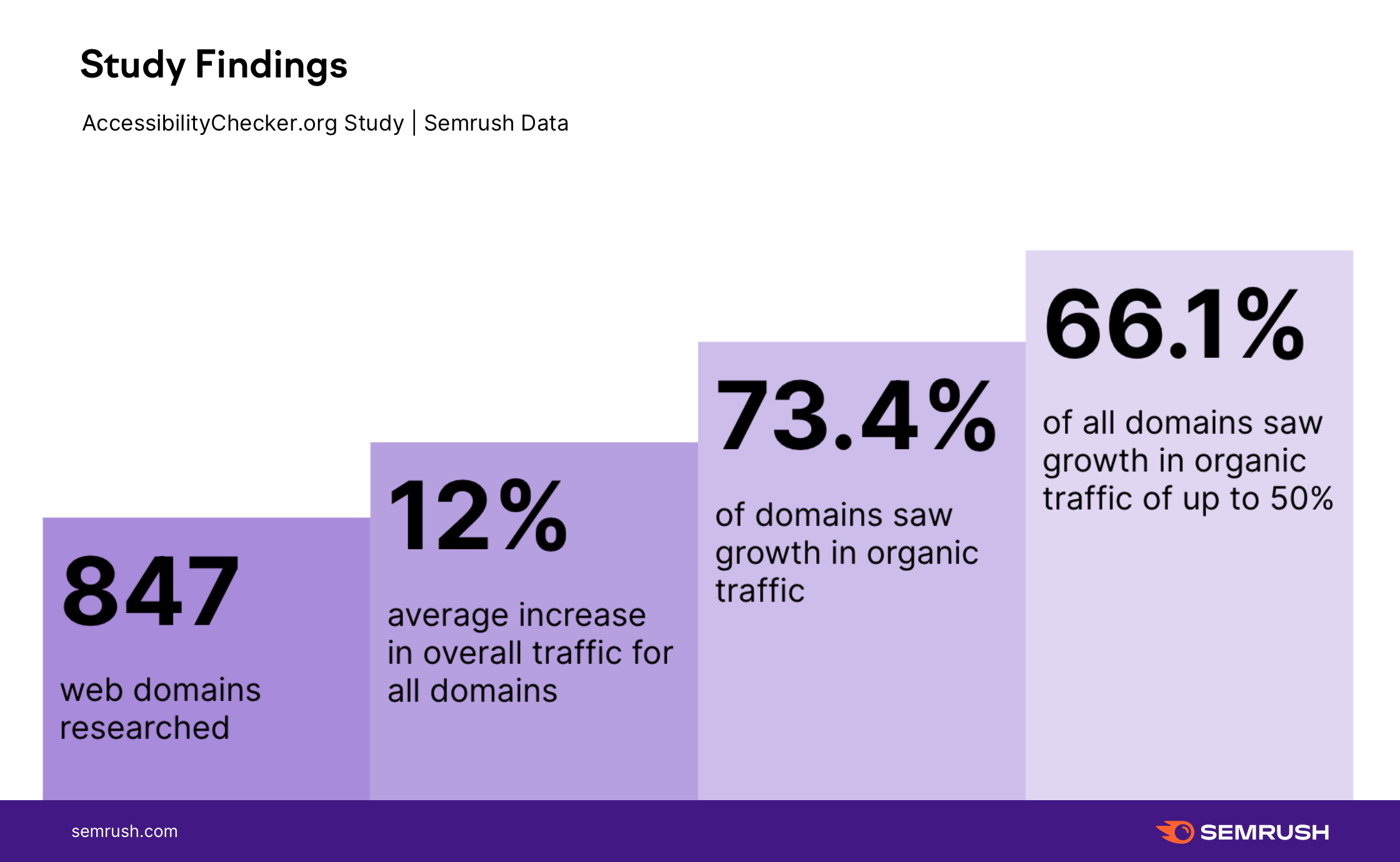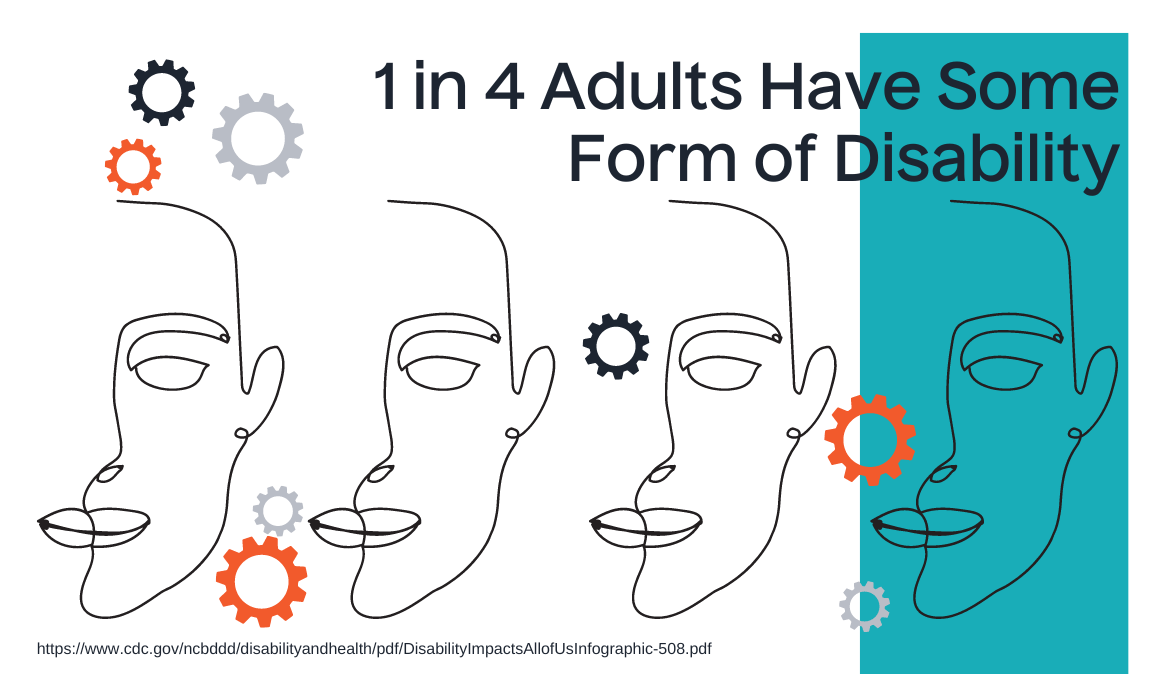
Web Accessibility and SEO – It’s Time to Act
It’s time to take action on web accessibility if you have not done so already.
Up until recently, web accessibility is something that most organizations have understood is a component of their user experience that they should address to better comply with the Americans with Disabilities Act (ADA) and Web Content Accessibility Guidelines (WCAG). Still, concerns over cost and outdated perceptions of critical need and business impact have stymied action.
Currently, it is estimated by WebAIM Institute for Disability Research, Policy, and Practice, that only 3% of the internet is genuinely accessible to people with disabilities. WebAIM’s 2023 report on the accessibility of the top 1,000,000 home pages found “small decreases in the number of detected accessibility errors and WCAG conformance failures. Some sectors, such as government and education, fare better than others.” While this is progress, significant work remains to make the web accessible. But it seems there may finally be some SEO consequences for failing to take action on web accessibility.
Web Accessibility and SEO Performance
Google is now paying closer attention to web accessibility. If there wasn’t a compelling enough reason to address your website’s accessibility in the past, this recent SEO development should serve as the tipping point.
In March 2022, Google’s Search Advocate, John Mueller, said that web accessibility was “not really” a ranking factor but admitted that Google did not then have a way to quantify accessibility. One year later, Google has not explicitly stated that accessibility is a direct ranking factor, but it is likely that it is an indirect factor. Accessible websites are more user-friendly and accessible to a wider range of people, which can lead to better engagement and user satisfaction. This, in turn, can lead to higher rankings in search results.
In addition, Google has been working to improve the accessibility of its search results pages. For example, in 2020, Google launched a new feature called “Web Vitals.” It measures the loading, interactivity, and visual stability of websites. These metrics are important for accessibility because they can affect how well a website works for people with disabilities.Overall, it is clear that Google is committed to making the web more accessible. It is likely just a matter of time before we see Google include accessibility as a search ranking factor. According to Google, “One of Google’s core principles is ‘Focus on the user and all else will follow.’ The Google User Experience (UX) team believes that usability and accessibility go together. We integrate accessible design thinking throughout the entire product development cycle.”
And the impact of web accessibility best practices on SEO is becoming evident. Semrush and AccessibilityChecker.org conducted a recent study and reviewed 847 websites to see if accessibility really did impact ranking on search engines. They found that implementing accessibility remediation solutions led to a 12% increase in overall traffic on average. The results showed that 73.4% of the sites had a rise in organic traffic. With 66.1% seeing a growth of 1% to 50% and 7.3% experiencing a rise of more than 50%.

All things Google aside, your customers likely need accessibility accommodations.
According to the World Health Organization (WHO), in 2019, at least 2.2 billion people globally had some form of vision impairment. But visual impairment is just one type of accessibility concern. A portion of your web visitors will have motor or dexterity issues preventing them from using a mouse or keyboard. Or your users may need cognitive or auditory accommodations to engage with your website’s content fully. To help put this in perspective, the Center for Disease Control (CDC) estimates that up to 1 in 4 adults (26%) in the United States have some form of disability.

There are no shortcuts.
There have been a lot of advancements in the realm of web accessibility. But there is still no easy, out-of-the-box fix. Web accessibility overlays and WordPress plugins like accessiBe have helped make website accessibility more achievable for small businesses and smaller web teams. However, it still is not a set-it-and-forget-it solution.
In fact, ignoring the accessibility tool after installation can do more harm than good. According to Search Engine Land, web accessibility overlays should be avoided, but we argue that they are just a first step in addressing web accessibility. The value of installing a web accessibility overlay like accessiBe is in its auditing capability, not in the overlay itself.
If every element on your website is accessible, the overlay should be redundant. But regular auditing will help ensure your web content remains accessible.

Include accessibility in your web design and development project.
Web accessibility should be built into any web design and development project. The best approach to web accessibility is to address and comply with the latest WCAG checklist and include those requirements in the design and development of the website as it is built.
Then use an accessibility auditing tool such as AudioEye or the Semrush Accessibility Scan & Monitor app to monitor your web content on a regular, ideally monthly, basis. Websites are never static; most organizations have multiple contributors and admins on their websites. A web accessibility auditing tool will help you maintain your web accessibility objectives and reap those SEO rewards as well.
Accessibility best practices are SEO best practices.
The added benefit of accessibility monitoring is that many accessibility best practices are SEO best practices. How you name your files on your website can help those with disabilities as much as it helps your SEO objectives.
Likewise, image SEO and best practices also help those users who need visual accommodations to engage with your website. Transcribing your video content is another example. Video transcripts ensure those users needing auditory accommodations can engage with your video content. Including transcripts in your content helps with SEO as well.
Accessible websites are also inherently optimized for voice search, and according to a Google-commissioned study, 41% of US adults and 55% of teens use voice search daily. These are just a few examples of how accessibility and SEO are intertwined.
Now is the time to implement accessibility on your website. Once you do, you’ll appear in more searches, attract more visitors, and comply with federal and state accessibility laws. You’ll also ensure your content is accessible to as many people as possible.